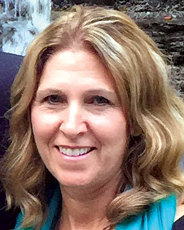
When we opened our aquatic therapy to the public in October 2014, we were all ready to be creative. Open swim times, classes and, of course, rehab, were all part of our overall wellness initiative strategy.
Our goal was for anyone – resident or community member – to be able to use the pool without a commitment and at an affordable rate. It was a state-of-the-art, novel approach to marketing, especially for our area. However, we didn’t realize how innovative we could be, and how much it could mean to our patients, until we encountered an opportunity with a stroke patient. What we did was something so exciting that it’s become a highlight of the power of aquatics when mixed with multiple rehab disciplines.
Many inspirational moments
Our stroke patient was experiencing space difficulties. This isn’t unusual in people who have suffered stroke incidents. They often have trouble with the process of reintegrating themselves into the surrounding space and making appropriate body movements and decisions. Aquatic therapy became an ideal way for him to explore balance and motion in a safer setting without the fear of falling. After he adjusted to our aquatic therapy pool, we determined that it might be possible to help him in another area during his hydrotherapy sessions: speech therapy.
We knew that other clinics had success with merging speech therapy and aquatic therapy, but this was the first time we had tried it with a patient. It was a true test of faith to put a theory into practice. Our onsite speech therapist went into the water with the stroke patient during his aquatic therapy and began to work with him on speech and sequencing exercises. Because he was more relaxed in the water, he was open to the idea of multi-tasking, something he wasn’t as comfortable doing on land.
The speech and aquatic therapists asked him to move his arm across his midline and press his right heel down onto the treadmill floor of the therapy pool. He was then asked to step up and press down again. When he had mastered this routine, the speech therapy introduced another level of challenge. She asked him to name his children as he was stepping.
To someone who has experienced a stroke, performing these types of tasks can be daunting, but he was so calm being in the water that he gamely agreed to the exercise. Afterwards, he did the same motions while counting backwards or naming vegetables or whatever it took to keep his mind and body working in tandem. As you can imagine, it was thrilling to watch as he made tremendous progress physically and with his speech.
He made substantial improvement while he was here, and I really attribute it to the aquatics because it was something he enjoyed. He relaxed and wasn’t as stressed or frustrated like when he was in the clinic. He just had more fun in the water. At this point, he has returned to his home. He’s done some home-based healthcare with us as an outpatient and is making strides toward life after stroke.
Innovation doesn’t happen all the time, but it can happen any time!
Sometimes, you can’t predict the far-reaching consequences of an innovative technique like doing aquatic and speech therapy in tandem. You might not even call your practices “innovative” at first, since you’re basically testing a hypothesis. However, the first time that you strike gold, so to speak, you realize how powerful being open-minded as a professional can be for you and your patients.
I encourage every one of my colleagues with access to an advanced aquatics program in a warm water therapy pool to try new things on a regular basis. I truly attribute our stroke patient’s substantial improvement to the merging of the aquatics benefits with the realities of speech therapy. He had fun in the water and didn’t get frustrated. Doors opened for him. There’s nothing like seeing progress to motivate everyone – you included – to work harder!
Debi Tyler, OT, is an occupational therapist at Cedar Village in Ohio.



